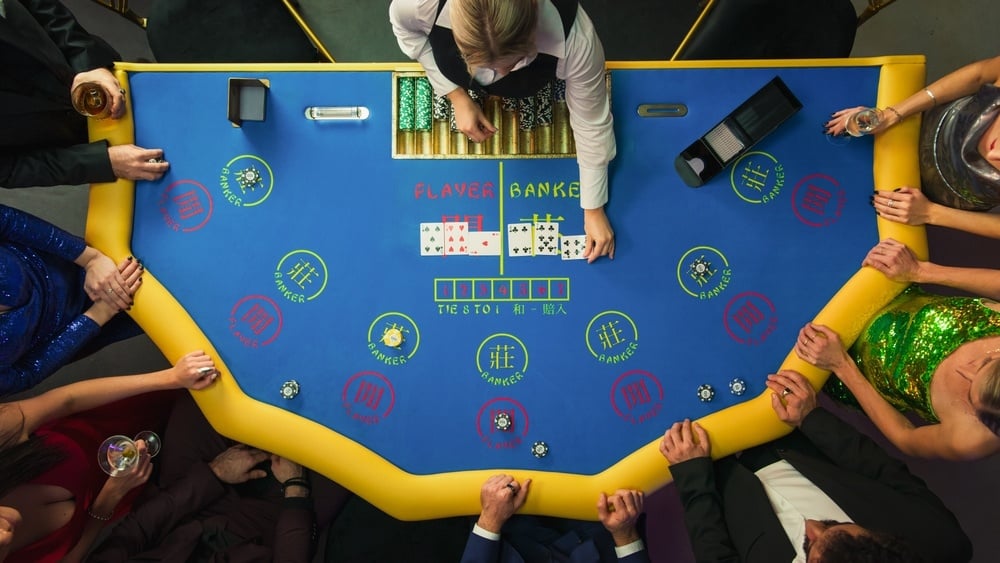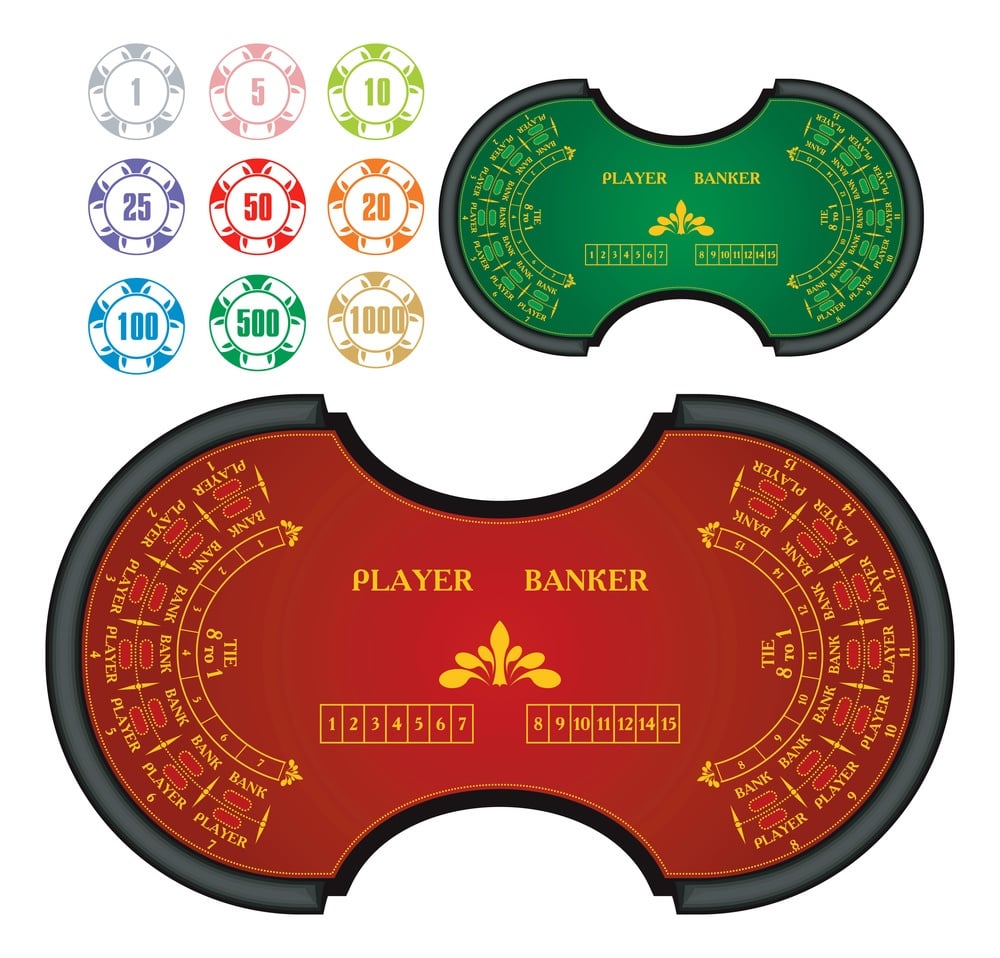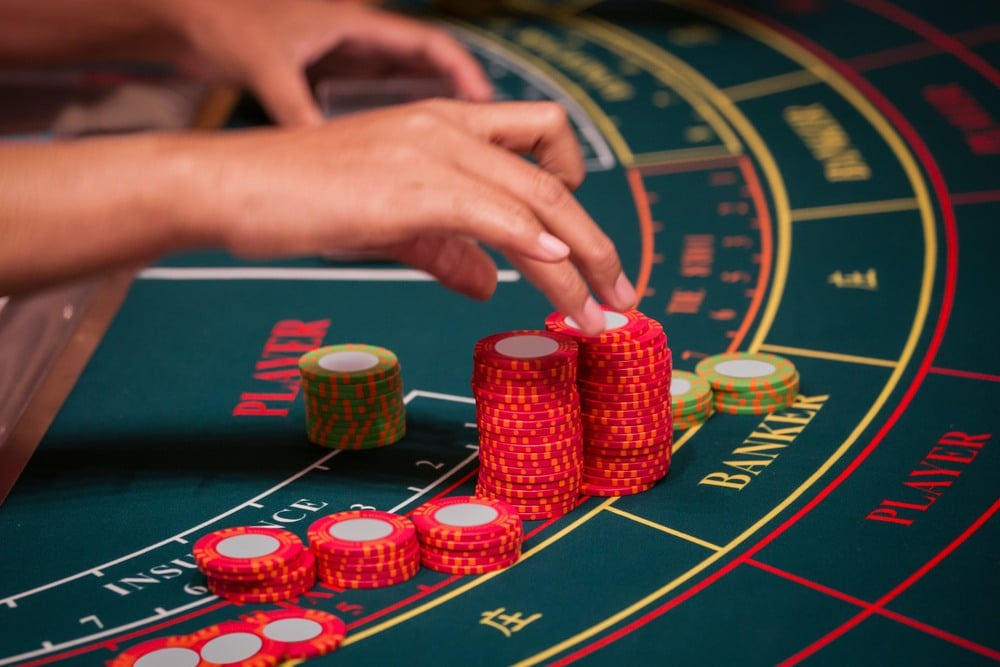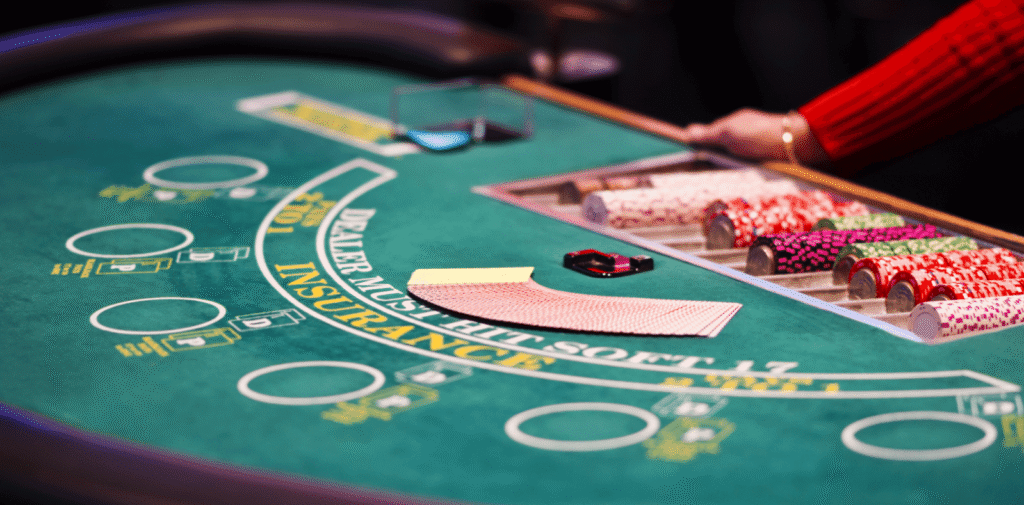What is Baccarat: What You’ll Learn
- Understand the basic rules and objectives of baccarat, a classic casino card game.
- Learn about the different variations of baccarat, including Punto Banco, Chemin de Fer, and Baccarat Banque.
- Discover the typical table layout and the role of the dealer in baccarat.
- Explore the betting options available to players, including Player, Banker, and Tie bets.
- Gain insight into the house edge and payout structure associated with each betting option in baccarat.
Baccarat is one of the most elegant and misunderstood casino games in the world. Often associated with high rollers and velvet-roped VIP areas, this centuries-old card game has an air of sophistication that can intimidate newcomers.
Yet beneath the mystique lies one of the simplest casino games to play – and one with some of the best odds for players.
Let’s dive into this fascinating game and uncover what makes Baccarat a favorite among casino enthusiasts from Macau to Monte Carlo.
Understanding Baccarat’s Historical Origins
Baccarat’s history stretches back to medieval Italy, where it was reportedly invented in the 1400s by a gambler named Felix Falguiere. The name “Baccarat” comes from the Italian word “baccara,” meaning zero – reflecting that all tens and face cards are worth zero in this game.
The game quickly gained popularity among French nobility in the 15th century during the reign of King Charles VIII. By the 19th century, Baccarat had evolved into a game exclusively enjoyed by aristocracy and the elite social classes throughout Europe.

Image Credit: Kitreel/Shutterstock
One fascinating historical anecdote involves the future King Edward VII of England, who in 1891 was called to testify in court over what became known as the “Royal Baccarat Scandal.” Sir William Gordon-Cumming, a prominent British soldier and royal friend, was accused of cheating at Baccarat during a private game at Tranby Croft, a country estate.
The scandal rocked British society, as gambling was considered improper for the aristocracy, and the Prince of Wales’ involvement caused public outrage. The case revealed the elite’s fascination with Baccarat and inadvertently brought the game to wider public attention.
Over time, three main variants emerged:
- Chemin de Fer: The original version popular in France
- Baccarat Banque: A three-person variant common in Europe
- Punto Banco: The North American version, now most widely played globally
The Punto Banco variation reached Las Vegas in the 1950s, where it was initially offered exclusively in high-roller salons before gradually becoming accessible to mainstream players. Today, Baccarat generates more revenue on the Las Vegas Strip than any other table game, surpassing even blackjack in many casinos.
Basic Rules of Baccarat
Baccarat is remarkably straightforward, despite its sophisticated image. Here’s how it works:
- The Objective: The goal is to bet on which hand will have a total closest to 9 – the “Player” hand or the “Banker” hand.
- Card Values:
- Cards 2-9 are worth their face value
- 10s, Jacks, Queens, and Kings are worth 0
- Aces are worth 1
- Only the rightmost digit of the total is used (so 15 becomes 5)
- Gameplay:
- Two cards are dealt to both the Player and Banker positions
- A third card may be drawn based on fixed rules (no player decisions)
- The hand closest to 9 wins
- Scoring Example:
- If the Player has 7+5=12, the value is 2 (only rightmost digit counts)
- If the Banker has 9+3=12, the value is 2
- This would result in a tie
The beauty of Baccarat lies in its simplicity – once you place your bet, no further decisions are required. The game proceeds according to pre-determined rules, making it perfect for players who prefer a relaxed gaming experience.

Image Credit: Sergey Korotkih/Shutterstock
The Role of the Player and the Banker
A common misconception about Baccarat is that “Player” and “Banker” refer to the actual participants in the game. In reality, these are simply the names of the two hands being dealt. You can bet on either hand, regardless of whether you’re physically sitting at the table.
The drawing rules for third cards are as follows:
Player’s Hand:
- If the Player’s first two cards total 0-5, the Player draws a third card
- If the Player’s first two cards total 6-7, the Player stands
- If either hand has a total of 8 or 9 (a “natural”), both hands stand
Banker’s Hand:
- If the Player stands, the Banker follows the same rule (draws on 0-5, stands on 6-7)
- If the Player draws a third card, the Banker’s action depends on the Banker’s total and the value of the Player’s third card, following a complex but predetermined set of rules
These rules are automatically applied by the dealer – you never need to make these decisions yourself.
Betting Options in Baccarat
In Baccarat, there are three main betting options:
- Player Bet: A bet that the Player hand will win. Pays 1:1 (even money) and has a house edge of approximately 1.24%.
- Banker Bet: A bet that the Banker hand will win. Pays 19:20 (even money minus a 5% commission on wins) and has a lower house edge of approximately 1.06%.
- Tie Bet: A bet that both hands will have the same total. Typically pays 8:1 but carries a high house edge of around 14.4%.
Some casinos also offer side bets such as:
- Player/Banker Pair (betting that the first two cards will be a pair)
- Perfect Pair (betting on specific paired combinations)
- Big/Small (betting on the total number of cards dealt)
These side bets generally carry much higher house edges and are best avoided by strategic players.

Image Credit: Visualize Creative/Shutterstock
Common Mistakes to Avoid
Even though Baccarat is straightforward, players often make these mistakes:
- Betting on Tie: Despite the attractive 8:1 payout, the tie bet has a massive house edge of 14.4%, making it one of the worst bets in the casino.
- Ignoring Commissions: Some players forget that Banker wins are subject to a 5% commission, leading to confusion at payout time.
- Following Patterns: Many Baccarat players meticulously track results looking for patterns, but each hand is an independent event with no connection to previous outcomes – especially true in electronic games and those online, because these are dealt by Random Number Generators (RNGs), and each deck (or decks) is/are shuffled by the computer continuously.
In real-world casinos 8-deck shoes are generally used, and while these 8-decks of cards are shuffled by a shuffling machine, these produce a “slug,” which is the “shuffled group of the 8-decks” all shuffled together, which is then placed into the dealing “shoe.”
In these games it IS possible to “track” the cards and “clumps” for THAT specific shoe duration, and, therefore, for these games, and under these specific circumstances, card-counting in Baccarat IS possible – although very difficult to do, and not very advisable – especially for casual players.
- Overcomplicating Strategy: Complex betting systems can’t overcome the mathematical house edge and may such “systems” actually accelerate cumulative losses.
- Playing Mini-Baccarat Carelessly: The faster pace of Mini-Baccarat can lead to more hands per hour, and therefore potentially larger losses if not managed properly.







